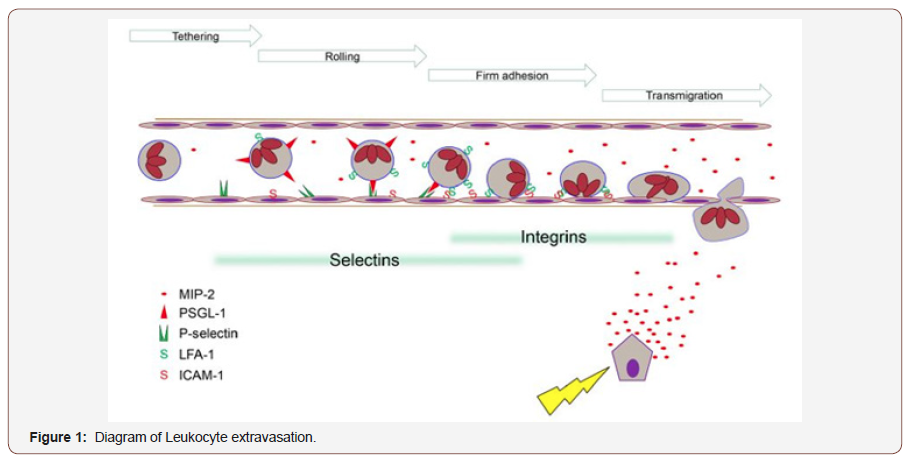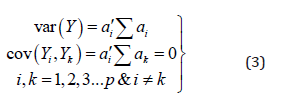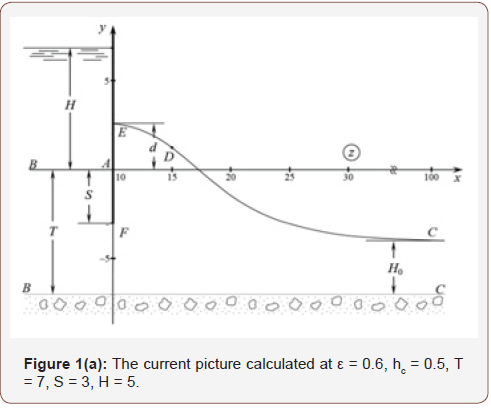Introduction
The objective of this short Opinion writing is a modest demand
for scientific renewal of the early phase of my doctoral research [3]
and my academic writings after that until 2019. Bibliotherapy in an
educational context for children and adolescents is a resource that
is not enough well known among teachers. My aim is to produce
and distribute knowledge of the ways in which literature and
literary arts can be practiced as a means of bibliotherapy, especially
in educational contexts. My intention is to develop a cost-effective
method of university level education, and to broaden the concept
of literature in the mentality of wellbeing e. g. with the method of
Pritney TM. Thus, the concept of bibliotherapy and its inherent
potential will be transferred into practice on an educational level
(universities), in childcare, kindergartens, pre-schools and in
schools along with our national project called Hand in Hand.
Discussion
Literature has a positive impact on a child’s development and
wellbeing [4,5] and bibliotherapy is an under-used resource in the
field of education. The combination of children and bibliotherapy is
significant in a world, where literary skills are ever more needed,
and I do not mean the importance to gain merely practical reading
skills. Bibliotherapy is a therapeutic approach that uses literature
(poems, stories, creative writing etc.) to support mental health.
Literature may be used for healing and personal growth and be
traced back to primitive man in religious rites, where poetry
was used for the wellbeing of the tribe or individual. Literature
as a healing method dates also back to ancient Greece. In short,
bibliotherapy means books and other literature to serve and help
(NAPT-The National Association for Poetry Therapy). It means
access to benefit from reading skills, but also to experience the joy
of reading. It is well documented that stories and literary activities
in children’s lives have diverse positive effects and by using carefully
selected thematic books teachers can use literature to reach out to
students experiencing difficult situations (6,2).
Many teachers in day care and at school practice bibliotherapy
in some manner, often without giving their practice a formal name.
However, effective follow-up activities, thoughtful questions, and
focused discussions require that teachers are mindful about their
use of books to address individual and group issues [7]. Teachers are
attempting to help students with socio-emotional difficulties, and
school professionals are searching for ways to promote skills and
adjustment (8). Collaboration between psychologists and educators
may be beneficial with bibliotherapy as a tool. There are methods
related to bibliotherapy which are available. These methods enable
discussions and provide guidelines for practice [9,10]. There
are web-pages encouraging families to have ‘important bookreading
sessions’ in children’s everyday lives [11,12]. However,
systematic in-depth studies on how books may be beneficial as bibliotherapeutic means in challenging situations in educational
contexts in kindergartens, schools, or at university are still missing.
Although, there are studies on practices in classrooms concerning
developmental bibliotherapy (13), the current knowledge is often
based mostly on reading skills, while babies’ books and reading
habits have been particularly ignored [14,15].
There have also been concerns regarding children’s diminishing
reading skills [10]. Additionally, there has been a concern about
the growing emotional problems in families and with children
in schools, and teachers are finding bibliotherapeutic activities
to enhance their wellbeing [16]. Some examples of this include a
10-step process for implementing bibliotherapy in the classroom
and providing samples of juvenile books used in bibliotherapy.
Responding to these issues, changes need to take place in ways that
support meaningful child–reading relations, and sensitive child
adult relations. For this to be possible there is an urgent need to
know
• What kinds of books and reading sessions are significant
to children, but also
• How it is possible to implement bibliotherapeutic reading
sessions and interaction with children as part of their everyday
lives.
Studies on bibliotherapy, especially academic research into
children’s bibliotherapy, and the beneficial use of books in early
childhood settings in shared everyday lives are, however, are
extremely rare, not only nationally but also internationally.
The disciplinary backbone of my scientific and academic
work comprises educational science, literary studies, cultural
anthropology and the multidisciplinary fields of posthuman studies
and animal studies, childhood studies and psychology. All of the
mentioned disciplines are areas in which children’s literature may
be used as a vehicle for development and may even involve healing
practices and meanings. In particular, affective bibliotherapy even
seems to be superior to cognitive bibliotherapy [4] for children,
and thus emphasizes the importance of the emotions, effectiveness
and sensitivity of adults during reading sessions [17]. The societal
significance of the research is anchored in serious consideration of
children’s and adolescents’ bibliotherapy and how we may benefit
from it on many levels in our society. There is an urgent need for
valuable academic research to raise a wider consciousness of
bibliotherapy. The research is also valuable for its practical goals in
implementing good practices and recommendations to be shared
between child health care centers, kindergartens, pre-schools,
and schools. A focus on bibliotherapy as “healing words” is an
acknowledgement of children as capable, complete, equal citizens
and also productive members of society. Children are people who
have their own thoughts, imagination, understanding and creativity.
Educators, teachers and parents need new vehicles to cope with
challenges of wellbeing with children and families in our changing
societies. Children have their rights to a good life and to many good
daily practices, e.g. at home and, at school and in day care. Making
reading a daily, enjoyable routine may be one thing to enhance
children’s wellbeing by listening to, what a child is interested in,
and to understand, what developmental tasks she/he is going
through at the moment [18]. Finnish curriculum of early childhood
education and care [18] is based on an integrated approach to care,
education and teaching (the Edu care model), and learning through
play is seen as essential.
Finland is a unique and timely context in which to study
children’s bibliotherapy, as our country is well known from its
good educational practices and children’s reading skills. We have
a long history with a school library system, and it is well known
that Finnish people like to read [19]. So, the assumption is, that
reading is part of everyday practices in various areas. The question
is, how to maintain the attraction and enchantment of creative
reading, and to ensure that educators have good knowledge of
the many possibilities brought forward by books and literature
which are central in bibliotherapy. Stories may be powerful tools to
maintain and enhance wellbeing on an individual and societal level
[20]. The relatively independent habit of reading among children
in general, in both urban and in rural everyday environments, is
internationally renowned [21]. However, there is an increasing
concern for children who face serious challenges in their everyday
lives, and who have no emotional access to stories, or enjoyable
reading moments, and there is a need to encourage families to
create reading moments. Additionally, in kindergartens, pre-schools
and schools, encouragement is needed to develop good reading
skills. Furthermore, as with the idea of bibliotherapy, especially
among children and adolescents, preventative, developmental, and
interactive bibliotherapy have special tools for adults to maintain
wellbeing and enhance joy among children, who have many
developmental tasks to conquer.
Conclusion
Previous research on bibliotherapy and children’s relations
with books: To summarize, the findings of my previous research (1-
3,14,15,22-25) indicate that/p>
• Bibliotherapy has applications in many contexts, also in
children’s lives,
• There is international concern regarding diminishing
reading skills of children, and that
• Children’s and adolescents’ (developmental) bibliotherapy
are not enough well known among parents, teachers, and
educators as a vehicle to create and sustain reading sessions
and reading habits, which are significant in children’s’ daily
lives.
Without knowledge of children’s views, child-book relations
often end up being ignored, or valued or only for their utility
towards children’s future development rather than their everyday
well-being. Of the research conducted related to children’s reading
skills, until recently virtually the entire focus was on children’s
development from an adult point of view. Studies seem to locate
in the field of education and assess the usefulness of reading skills
towards children’s development. Of these studies, a further majority
focus on scaffolding, or the use of new media in improving children’s
educational skills. Caring, companionship, security, comfort,
amusement and joy are items which are essential to developmental
and preventive bibliotherapy, and these are the major focus of this
Opinion writing. Studies into disciplinary frameworks of children’
s bibliotherapy on an educational level are drastically fewer in
numbers and arise mostly from the fields of social sciences, medical
science and psychology [26]. The benefits of “power stories” in the
everyday life of “healthy” children to enhance their wellbeing in
situational and developmental tasks need to be studied.
Studies on child-book relations, within educational sciences in
particular, can explore the usefulness of picture books especially
in pre-primary education and children’s literature in formal
education. Questions which have profound implications for society
are virtually unexplored, e.g how student kindergarten teachers can
and practicing teachers handle the ever-increasing developmental
tasks in the growing multi-cultural contexts of children, e.g. in
children’s everyday places such as day care and schools.
At the moment I am working in a national project called Hand
in Hand, funded by Finnish Ministry of Education and creating my
Pritney Method, which brings forth a concept from bibliotherapy
[27], approaching child-book relations from the viewpoints
of children in their daily lives, and how books and literary art
focused activities have the power to enhance children’s knowledge
of themselves, to bring joy and build trust in the future. As in
educational settings, this concept is referred to as developmental
bibliotherapy and may be used by teachers, librarians and parents,
and is meant to help children grow and develop [28-31]. In particular,
this project has a special interest also in infants, and how literary
arts may be practiced with infants, as well as how parents may be
sensitive with their babies and create interaction with rhymes, first
books and joyful moments in stories. Especially, pictures that are
aimed at infants and their families are lacking evidence in academic
research [32,33]. Theoretical-methodological approaches situated
in literature studies, childhood studies, in addition to emerging
approaches under ‘post humanism’ and psychoanalysis, such as the
work of scholars including Freud, Winnicott, Mazza and Pennebaker
contest the notion of literature and its benefits in multiple cultural
contexts.
Results
Learnt 9 articles found that aloe vera functional to speed up
the healing process of wounds into reduce the intensity of pain in
the treatment of oral lichen planus, stomatitis, diabetes mellitus,
pressure ulcers, venous ulcers, chronic anal fissure, heal burns,
burning mouth sydrome, alpthous minor, operation post [8]. So that
could be said that the content of aloe vera has function to speed
up the healing process of wounds and could reduce the intensity
of pain which is due to several health body problems. There is
one articles that has different to the efficacy of aloe vera, other to
speed up the healing process of wounds and reduce the intensity
of pain which one aloe vera gel was encapsulated in liposome was
used in the healing melasma process. Because the content aloe
vera gel has function as a skin pigmentation modifying agent [9].
Literature learn identified from 9 papers that have been done with
critical steps so that from 9 articles discussing aloe vera which are
managed or extracted in various forms and has different properties.
Application in several treatment related to health problems in the
forms of gel cream, juice, and solution of follows.
Aloe vera gel
Four researching articles identified the efficacy of aloe vera gel
nonetheless there are differences in other of research. Ghafarzadeh
M & Eatemadi A [9] using aloe vera gel extract (AGE) 0,5 % and
encapsulated liposomes 1% weight of treatment given to melasma
patient with significant results. Shahzad MN & Ahmed N [10]
researching using aloe vera (Aloe Tone Je IR) get which is not
purified and has 98% gels used for the treatment of superficial
burns and partial with the result that aloe vera get can speed up the
healing process of wounds and reduce the intensity of pain. López
jornet P et al. [11] identify aloe vera barbadensis gel combined and
tongue protector it was found that using of aloe vera gel and tongue
protector can reduce duration of wound healing to burning mouth
syndrome patients. Others researching’s that reduce pain score and
wound size but also accelerates the healing of alpthous stomatitis
wound [12].
Aloe vera cream
Three researching articles identified aloe vera which is
managed into the form of cream. Researching by Babaee N et al.
[12] was found using cream of aloe vera oil (AVO cream) toward
wounds recovery with results with significant improvement results
using pain assessment tools (VAS), AVO cream efficacy statistical
test scores increased significantly (p<0.001). Rahmani N et al. [13]
identified the effect of aloe vera cream 0,5% in chronic anal fissure
treatment and it was found that using aloe vera cream could reduce
pain and accelerate the process of wound healing during chronic
anal fissure treatment. Eshghi F et al. [14] also identified the using
of aloe vera cream into reduce pain and accelerate the process of
post-surgery wound healing, post defection (hemorrhoidectomy)
and found that aloe vera cream significantly reduced post-surgery
pain at 12, 24, 48 hours and 2 weeks post-surgery and patients
who is receiving aloe vera cream has decreased when take number
two significantly at 24 and 48 hours after hemorrhoidectomy and aloe
vera cream significantly helps wound healing to post-surgery
patient during 2 weeks.
Aloe vera juice and gel
One researching has been done by Pol JS et al. [8] identified
combination of aloe vera juice and gel in oral symptomatic lichen
planus treatment, the said by combining treatment juice and gel in
symptomatic oral lichen planus treatment reduce the duration of
pain.
Aloe vera solution
Mansouri P et al. [15] using aloe vera solution to stomatitis
and pain intensity in patient who undergoing chemotherapy
procedures and the results were obtained that using of aloe vera
solution to reduce the pain of chemotherapy to stomatitis patients
are very effective with statistical test results on third day (on the
3rd day) - 14th day P : 0.001 (stomatitis intensity) and P: 0.001
(pain intensity).
To read more about this article....Open access Journal of Complementary & Alternative Medicine
Please follow the URL to access more information about this article
https://irispublishers.com/ojcam/fulltext/we-need-stories-and-bibliotherapy-offers-one-solution-to-developmental-issues.ID.000523.php





 can be represented
approximately in terms of the joint variation of a fewer number, say k
< p , of hypothetical variables without much loss of information.
That is X p×1 are replaced by a linear transformation,
can be represented
approximately in terms of the joint variation of a fewer number, say k
< p , of hypothetical variables without much loss of information.
That is X p×1 are replaced by a linear transformation,


 the
ith
the
ith



 are in different units,
two or more variables are measured on vastly different ranges or
standardized random variables are used instead of the original
random variables, the correlation matrix, , is used to calculate
Principal Components (PC) instead of Σ [4].
are in different units,
two or more variables are measured on vastly different ranges or
standardized random variables are used instead of the original
random variables, the correlation matrix, , is used to calculate
Principal Components (PC) instead of Σ [4].






